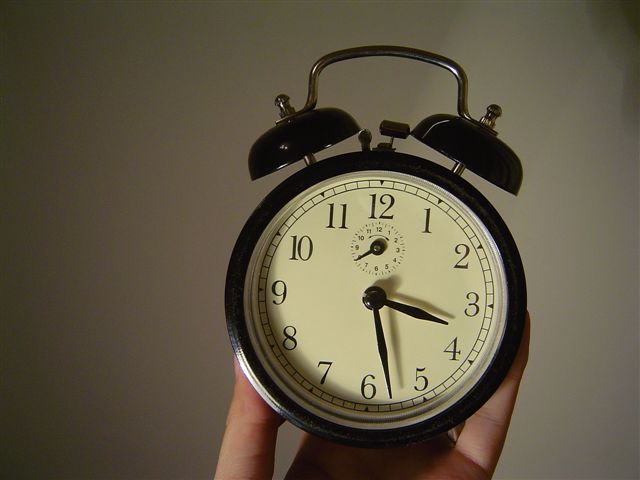
The object that I chose that I disliked was my Dekad alarm clock from IKEA. Put simply, this clock was purchased with the intention of waking me up faster than my regular electric alarm clock that gave off just a bland beep that was both irritating and ineffective.
Visuals – The clock itself is very quaint and bares simple positive aesthetics that are very desirable. It has an old-fashioned look to it and just looking at the front gives the user an idea of how it works.
Feedback – This clock is designed effectively enough so that any actions you perform on the backside control panel instantly perform an action on the opposite side. However, because there are no AM/PM specifications, the user cannot be certain when the clock will ring, so the system status is not clearly visible in that sense. The ring itself is quite loud and if it is unintentionally set a ring on a high setting is often quite traumatizing and gives the user a harsh wake-up.
Affordances - Everything that works inside the clock can be seen outside. This way, the user is aware of what the bells do, what the small hammer does, how the hands operate, and where the alarm mini-timer is. Personally, the fact that this clock does not run electrically is also a perk.
Mapping – The clock has a few knobs on the back, but the product itself only comes in a cardboard frame with brand labels, but no instructions of any kind. Turning each knob in turn produces a different effect. There are no labels on the back panels, so every time the clock needs to be set, wound, or the alarm needs to be changed, the user needs to play around with the controls in order to remember what each control does. A knob controls each hand on the clock, so the user may need to spend up to half an hour figuring out the mechanism, as well as the workings of the alarm.
Constraints - Because of the lack of labeling, the clock itself cannot always be set with certainty that it is going to work, unless the user themselves decides to label everything. Physical restraints are few, since the clock itself is easy to set and does not require a large amount of strength to alter. Comprehension-wise, young children or individuals without prior introduction to traditional alarm clocks may not be able to fully comprehend each of the functions on the back, or how the two different clocks on the face work together.
Habituation - From experience, every traditional alarm clock has roughly the same mapping on the back panel. This way, if used properly and enough times, it can be easily accessed at any time. A drawback of this system is that, while the knobs may all be present on each clock, the variety of clocks that exist widen the chances of having to adapt to a new clock every time.
No comments:
Post a Comment